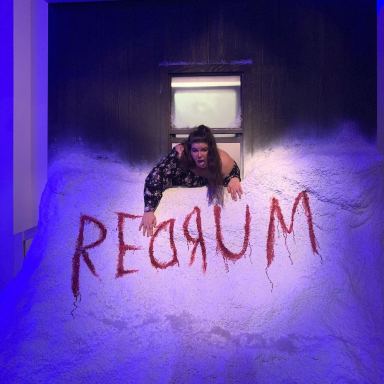40 Horror Movies With Disabled Characters
Good horror is all about vulnerability.
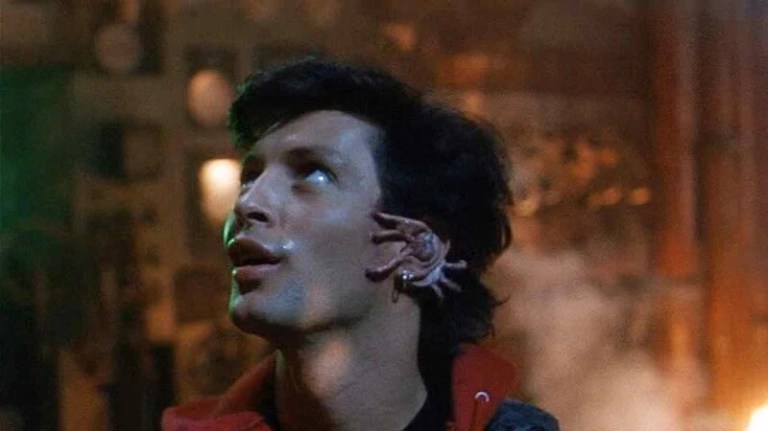
Good horror is all about vulnerability. You can’t create suspense if the would-be victim is impervious to the monster’s attempts to hurt him or her. Because of this, vulnerable humans are often horror protagonists. It’s the reason horror is the only genre where female characters speak as much as male characters. It’s also why so many horror movies are made about disabled characters.
Featuring a disabled character creates vulnerability as able-bodied viewers imagine themselves even more at the mercy of the film’s villain. Disabled viewers also find representation of the real differences in their ability to protect themselves in a world built for able-bodied people. In real life, people who are disabled are twice as likely to be the victim of a violent crime.
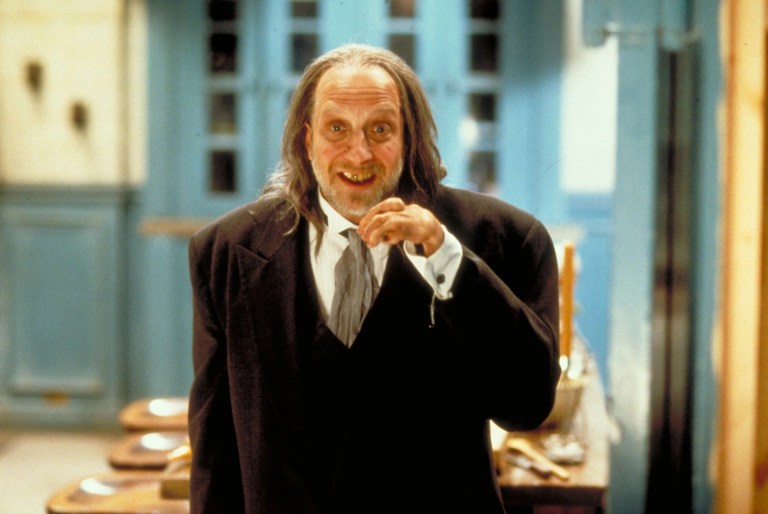
Not all portrayals of characters with disabilities are good. Horror movies about disabled characters can also perpetuate negative stereotypes about lifestyles with which the average person may be entirely unfamiliar. For example, sometimes a character’s disabled body is used as a vehicle for humor, like the character of Hanson in Scary Movie 2 (2001). Movies also tend to favor portraying overt disabilities such as blindness or the use of a wheelchair rather than “invisible disabilities” such as chronic illness or brain injuries, even though the latter are much more common. This creates problems, as media builds a public perception of disability that is not similar to the lives of actual disabled people.
If you’re looking for high-qualitys films that most accurately portray what life is like for disabled people, look for films with disabled creatives in above the line roles. Also look for film festivals like the ReelAbilities film festival, launched in 2007. It is now the largest film festival dedicated to movies by or about people living with disabilities and hopes to create more films by disabled creators.
Here are the most notable films in horror history that feature characters with disabilities:
The Cabinet of Dr. Caligari (1919)
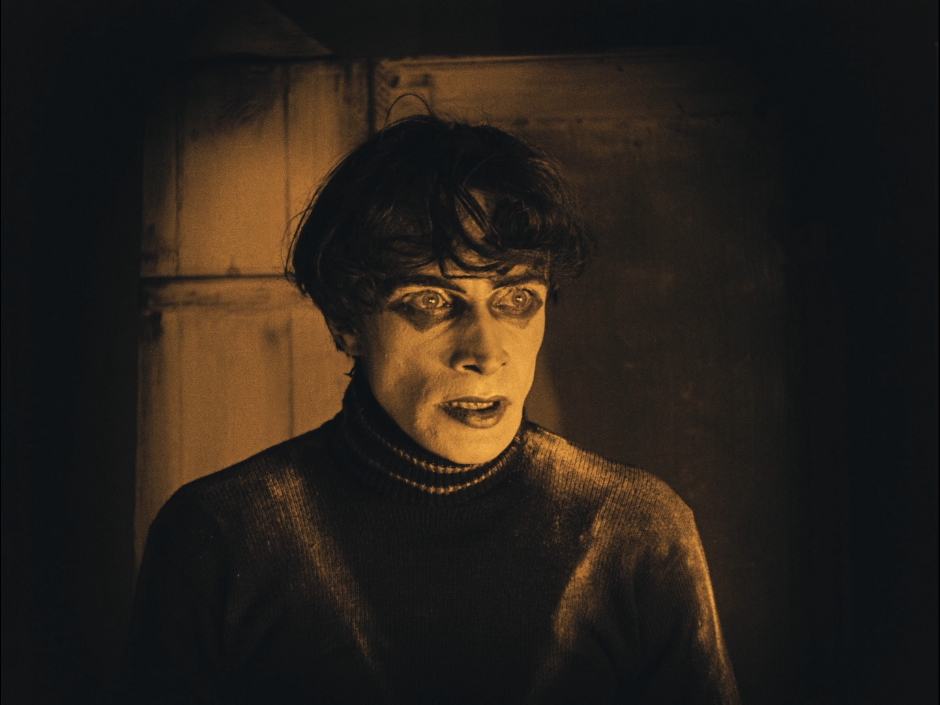
Dr. Caligari is a silent horror film about an insane hypnotist (the title character) who uses his skill to get his patient to perform murders for him. Remembered as the first horror movie (and one of the first twist endings in cinema), it is also one of the first movies about a disabled (“insane”) person.
The Phantom of the Opera (1925)
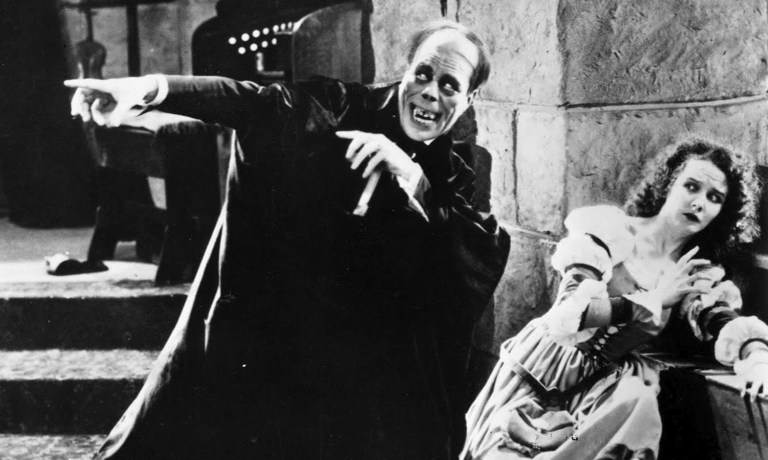
At the beginning of cinema, inclusion of disabled characters was for the sole purpose of framing them as monstrous. Disabled bodies were presented as “scary,” and the disabled person became the villain of the story often just for the way they looked. If the disabled character hurt people, they were given no motive other than their existence as a disabled person. A common trope, exemplified by The Phantom of the Opera, was that of a disabled character who seeks to exact revenge upon the non-disabled world.
Having a body that abled people consider somehow “wrong” is enough of a reason for villains to commit murder — often their only reason.
Alison Stine, Some horror movies take a new approach to disability: Fetishizing deafness
Freaks (1932)
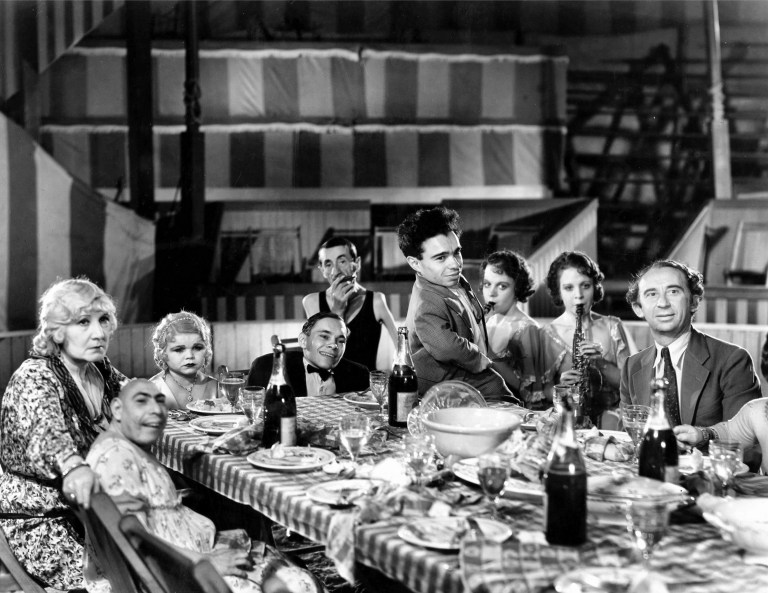
Despite being almost a century old, Freaks remains one of the only films to ever feature an ensemble cast of mostly disabled characters. Even better, the roles were played by actual people with disabilities, though the actors were treated poorly on set by MGM employees. Freaks follows a troupe of carnival sideshow performers in a French circus when a trapeze artist named Cleopatra (Olga Baclanova) joins the group with the hopes of seducing (and then murdering) a dwarf performer named Hans (Harry Earles), who is due to inherit a fortune.
For many disabled people who grew up without others like them, ‘Freaks’ became a gateway feature to champion. The shooting process was difficult, unaided by the fact that the circus performers were forced to eat outside the MGM commissary, due to complaints from the studio’s stars about seeing them.
Kristen Lopez, ‘Freaks’ Is the Granddaddy of Disabled Horror, for Better and Worse
House of Wax (1953)
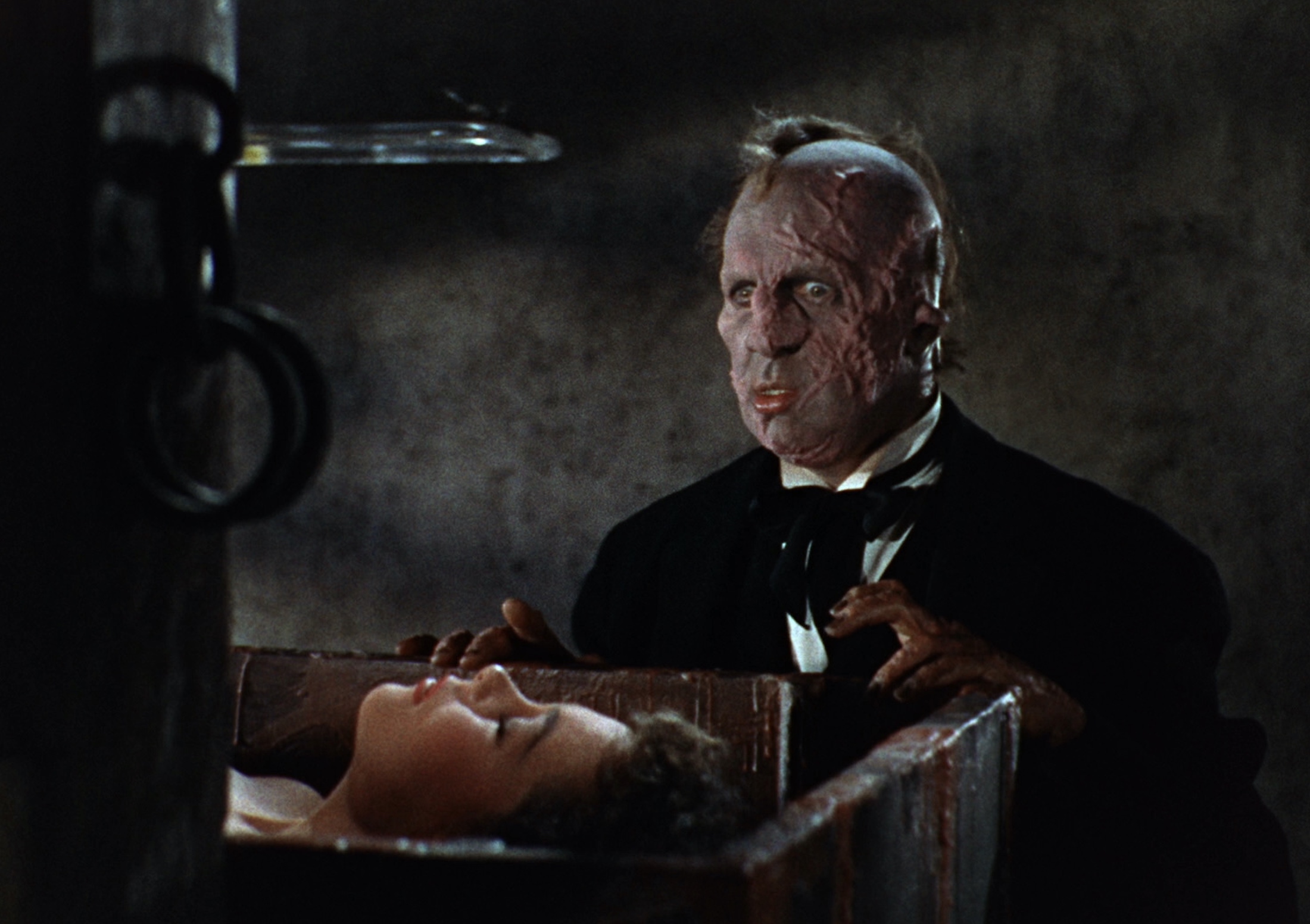
After his business partner attempts to murder him and burn down their wax museum for insurance money, Professor Henry Jarrod (Vincent Price) is left disfigured, using a wheelchair and with hands too injured to sculpt new figures. He takes revenge and repopulates his wax museum by murdering people and passing their bodies off as wax statues. Jarrod’s deaf and mute assistants, Igor (Charles Bronson) and Leon Averill (Nedrick Young), help him carry out the murders and build a “chamber of horrors” in his wax museum to showcase his victim’s violent ends under the guise of showing famous deaths like Anne Boleyn’s decapitation.
Rear Window (1954)

Rear Window is an example of the trope known as the “Single Episode Disability,” where an able-bodied character is temporarily disabled in order to learn a lesson. A photographer, L. B. “Jeff” Jefferies (James Stewart) is temporarily disabled after he breaks his leg while taking photos at a racetrack. He passes the time while recovering by spying on his neighbors from his Greenwich Village apartment, where most of his neighbors have left their curtains open due to a heat wave. One night Jeff believes he witnesses a man murder his sickly wife and dispose of her body by cutting it up and carrying one briefcase-full at a time out of his apartment. The film’s much-praised third act involves the killer realizing Jeff has witnessed the murder and Jeff’s hindered ability to defend himself when he realizes the killer is coming for him.
Whatever Happened to Baby Jane? (1962)
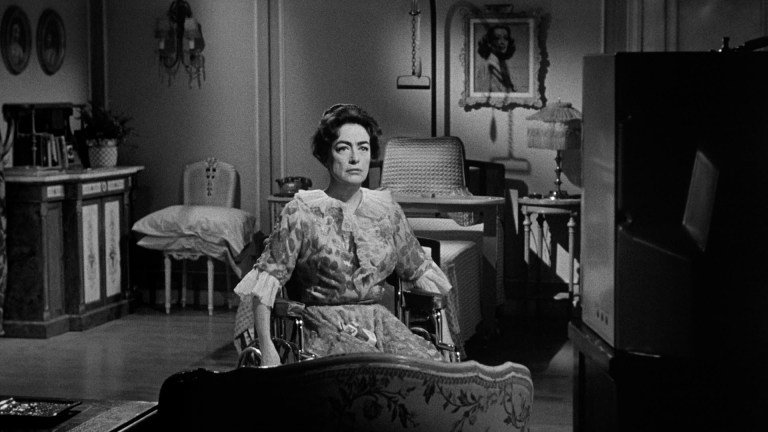
A psychological horror movie about aging child star Jane Hudson (Bette Davis) and her paraplegic sister, Blanche Hudson (Joan Crawford). When Jane began to age out of roles, she became an alcoholic. Meanwhile, Blanche’s career as an actress finally took off — until she was paralyzed by a car accident believed to be caused by Jane. As older women, the two live together in an old Hollywood mansion where Jane abuses her disabled sister.
Wait Until Dark (1967)
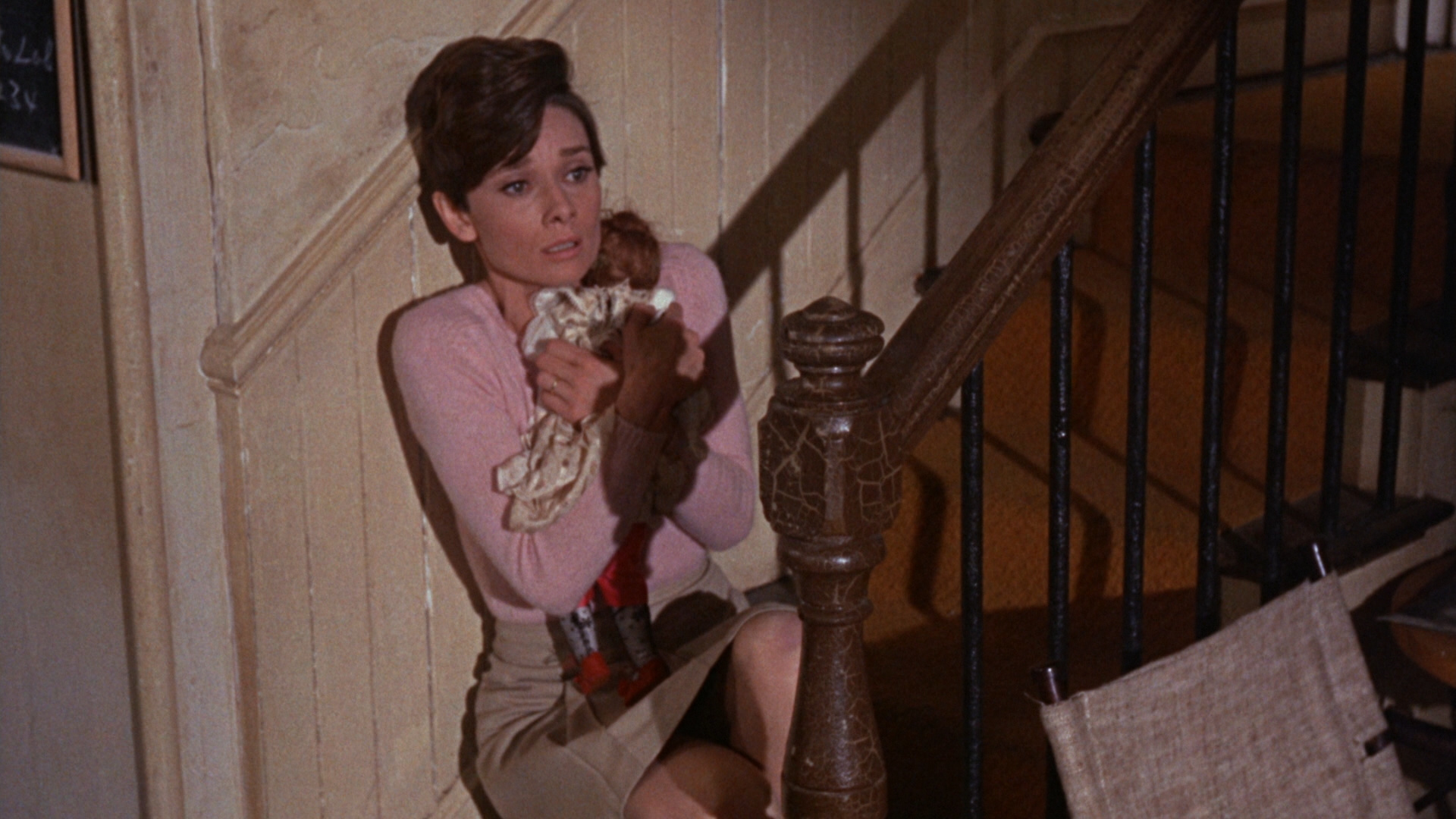
Audrey Hepburn was nominated for an Academy Award for Best Actress for playing the role of Susy Hendrix, a recently blinded woman who unknowingly comes into possession of a doll filled with heroin. While her husband is away, con men trick Susy into believing they are helping her, using Susy’s inability to see against her. When she realizes she is in danger, Susy turns the tables by breaking all the lights in her apartment so that the con men won’t be able to see, either.
The Cat O’ Nine Tales (1971)
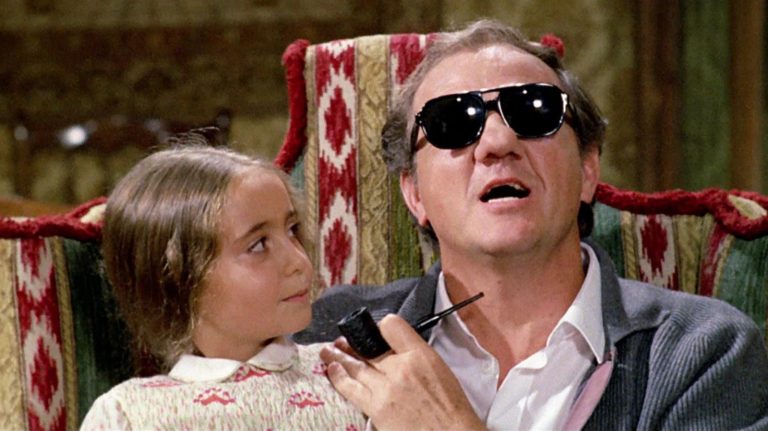
The Cat O’ Nine Tales is a giallo written and directed by master of horror Dario Argento. The story is about two reporters (one blind) who seek to solve a mysterious break-in at the Terzi Medical Institute, where they were researching crime prevention. The “nine tales” in the title refer to the number of leads the reporters follow, as there are many suspects in this case.
See No Evil (1971)
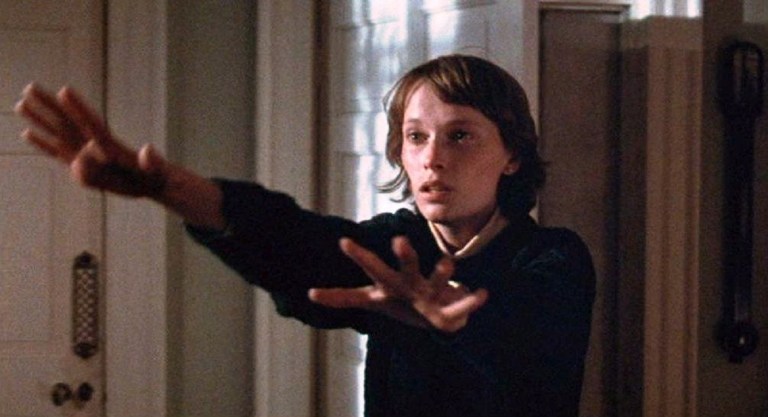
Mia Farrow stars as Sarah, a woman recently blinded by a horse-riding accident. She is visiting her uncle’s mansion when her family is killed by a psychotic intruder. When Sarah returns home from a date, she discovers the corpses of her family members and flees. Two subsequent fake-out “rescues” ensue in which Sarah’s blindness allows her to be more easily deceived and preyed upon.
Don’t Look Now (1973)
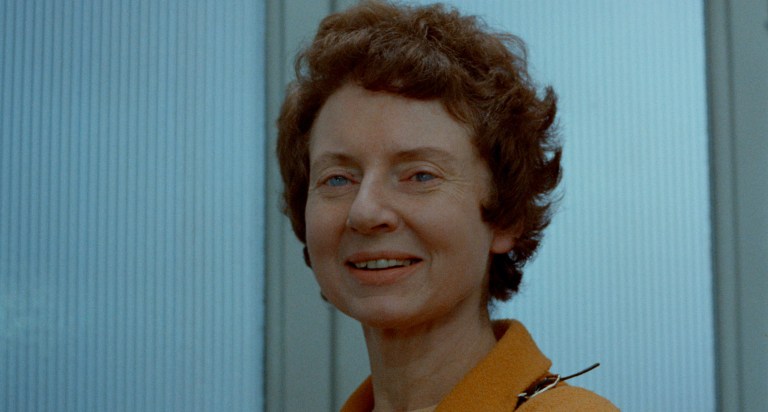
While temporarily living in Venice, Laura Baxter (Julie Christie) has a chance encounter with a blind woman named Heather (Hilary Mason). Heather is clairvoyant and tells Laura that her recently deceased daughter is trying to contact her to warn her that she is in danger. Meanwhile Laura’s husband, John Baxter (Donald Sutherland), sees Laura on a boat that is part of a funeral procession while Laura is supposed to be hundreds of miles away. He also sees a little girl in a red raincoat who looks similar to his daughter on the day of her death. The film’s twist ending reveals that the “little girl” is in fact an adult woman with dwarfism. The woman is the serial killer who has been at-large and murders John, leading to his wife being on a funeral procession by boat, just as he foresaw.

The Texas Chain Saw Massacre (1974)

Sally (Marilyn Burns) and her paraplegic brother, Franklin (Paul A. Partain), are on a road trip with some friends to visit their grandfather’s grave, where there have been recent reports of grave-robbing. Franklin’s character is shown to annoy everyone else and is remembered as being one of the most unlikeable non-villain characters in horror. When Leatherface comes for him, there’s not much Franklin can do but try to roll himself away over a rough, grassy terrain. Leatherface himself is also a disabled character, as he is mute and seems to have childlike cognitive abilities despite being an overgrown adult man.
Deafula (1975)
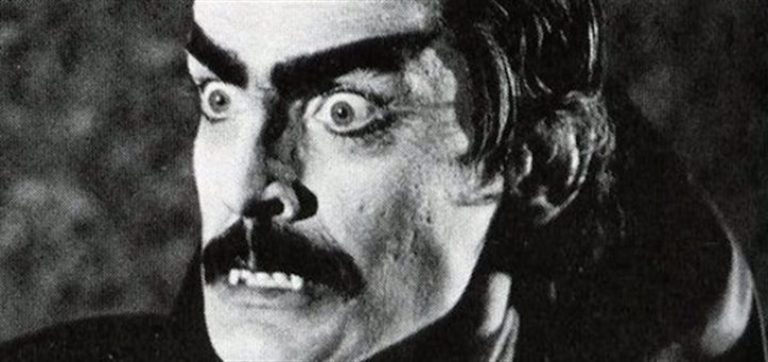
The first film of its kind, Deafula‘s primary language is American Sign Language, with voiceovers provided for audience members who don’t know ASL. The plot follows a town where 27 murders have left victims drained of their blood. A theology student, Steve (Peter Wolf), begins to suspect that he may be a vampire.
The Beyond (1981)
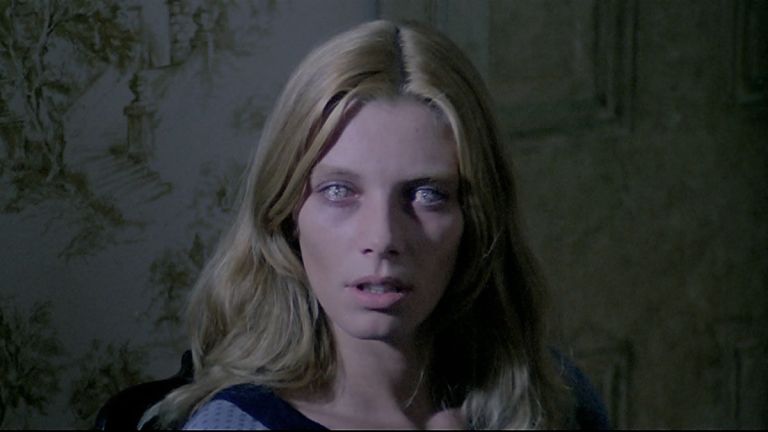
An Italian supernatural horror movie, The Beyond is about a woman who inherits an infamous murder hotel in Louisiana that may be a gateway to hell! The Beyond utilizes the “Blind Seer” trope with the character of Emily, a blind doomsayer who warns that reopening the hotel will lead to disaster.
Friday the 13th Part II (1981)

Years before attending a training camp for counselors, Mark Jarvis was in a motorcycle accident that paralyzed his lower body. As a former athlete, Mark kept a positive attitude and became a camp counselor with the hopes of eventually walking again someday. Unfortunately, Mark’s final camp experience was near the old Camp Crystal Lake. Jason finds Mark, smashes a machete into poor Mark’s face, and sends Mark rolling backward in his wheelchair down a tall set of steps in a scene that echoes the stairway fall in The Exorcist (1973).
Silver Bullet (1985)
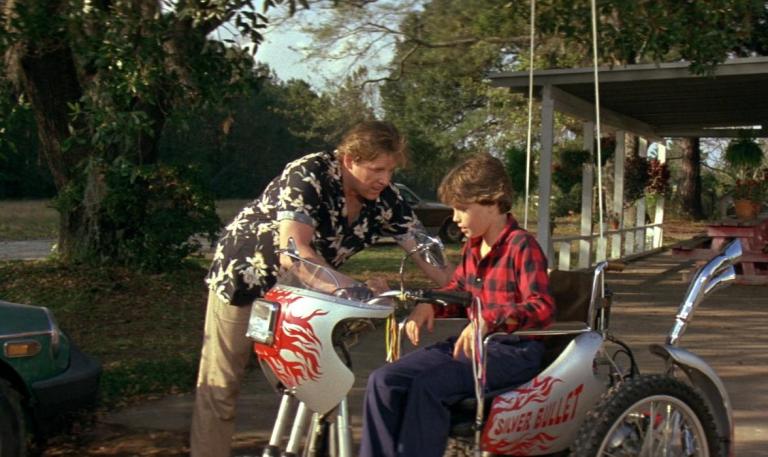
Silver Bullet stars Corey Haim as 10-year-old paraplegic Marty Coslaw. Marty’s hometown is rocked by a string of brutally violent murders, but that doesn’t prevent Marty’s Uncle Red (Gary Busey) from doing something nice for his nephew. Uncle Red builds Silver Bullet, a tricked-out wheelchair with three wheels, handlebars, and a motorcycle engine. Uncle Red is not just a fun uncle, he’s also a hero since the speed of Silver Bullet saves Marty’s life during his first encounter with the town’s resident werewolf.
Jacob’s Ladder (1990)
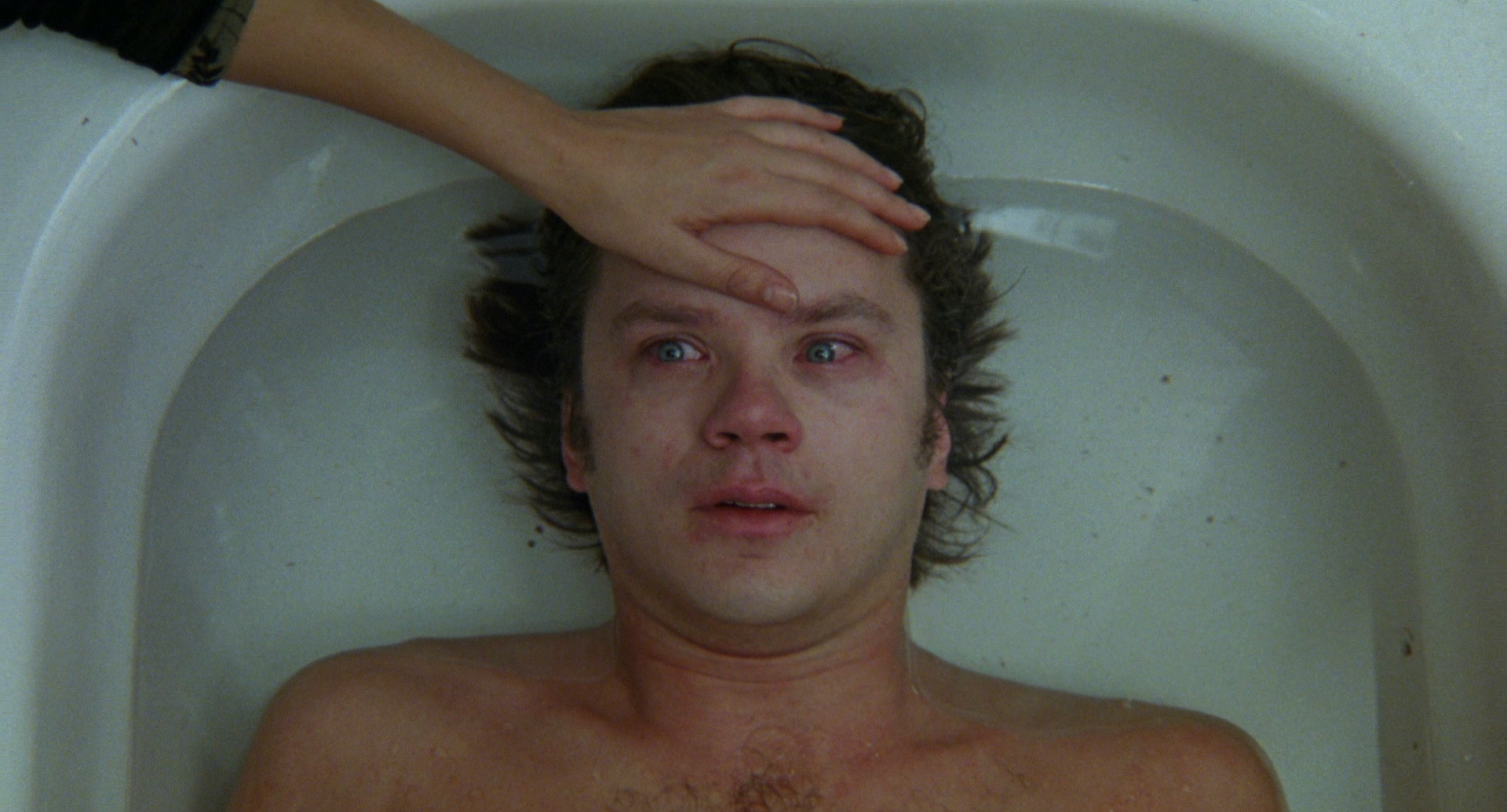
A psychological horror movie, Jacob’s Ladder is about Jacob Singer (Tim Robbins), a Vietnam veteran suffering from PTSD. Jacob frequently experiences disturbing hallucinations and flashbacks to an attack he survived in the Mekong Delta. While fictional and intentionally horrifying, Jacob’s Ladder is a more realistic portrayal of going through life with an invisible disability that affects everything you do.
Misery (1990)
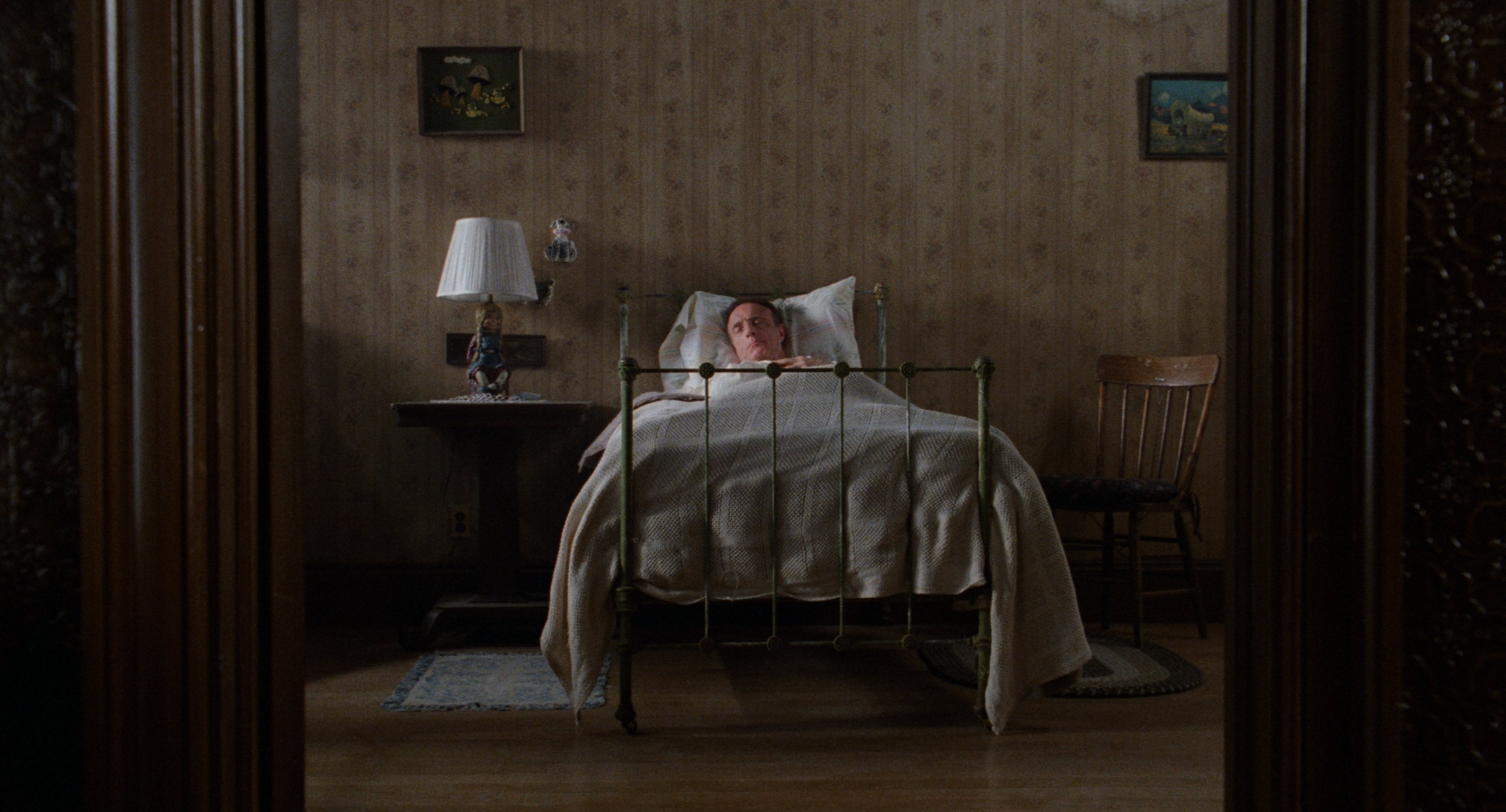
Another example of “Single Episode Disability.” Novelist Paul Sheldon (James Caan) wakes up bedridden after surviving a snowy car wreck. He is further disabled in a gruesome scene where his captor Annie Wilkes (Kathy Bates) produces a sledgehammer and hobbles him. (In the book, poor Paul’s foot is cut off with an axe.) Like people with disabilities in real life, part of the horror in Misery comes from Paul’s vulnerability and complete dependence on his caretaker — who does not have his best intentions in mind.
Freddy’s Dead: The Final Nightmare (1991)
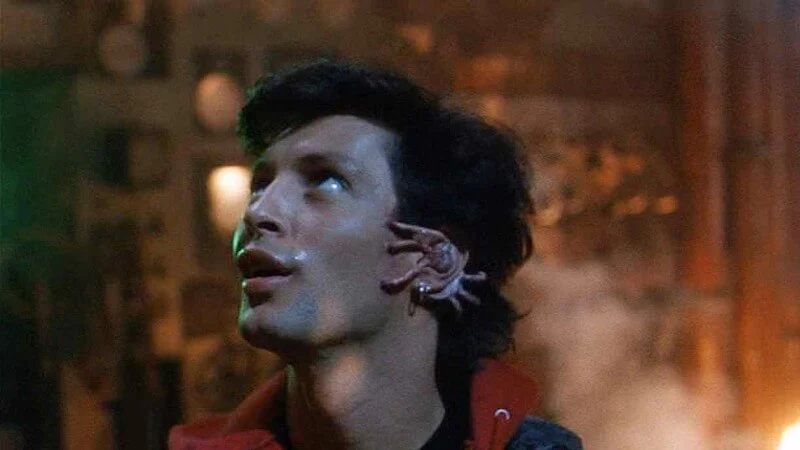
Freddy’s Dead is an odd entry in the series that some people love and some people hate, but it’s hard to argue against the fact that it has plenty of memorable scenes. For instance, the death of Carlos Rodriguez is one of the most memorable murders Freddy Krueger ever commits. Carlos (Ricky Dean Logan) is hard of hearing because of physical abuse suffered as a child, and Freddy takes full advantage of his disability. In a nightmare, Freddy jams a cotton swab into Carlos’ brain, cuts off his ear, gives him super-hearing with a fleshy hearing aid, and then explodes Carlos’ head by scratching his claws across a chalkboard.
Mulholland Drive (2001)

Director David Lynch uses actors with dwarfism in several of his films including Mulholland Drive in order to create a sense of surrealism for able-bodied viewers. Dwarf actor Michael J. Anderson portrays Mr. Roque in Mulholland Drive, the mysterious man who controls Hollywood studios. In order to give viewers an uncanny response to Mr. Roque, Anderson was shown seated and wearing prosthetic limbs so that his head appears deceptively small.
Panic Room (2002)
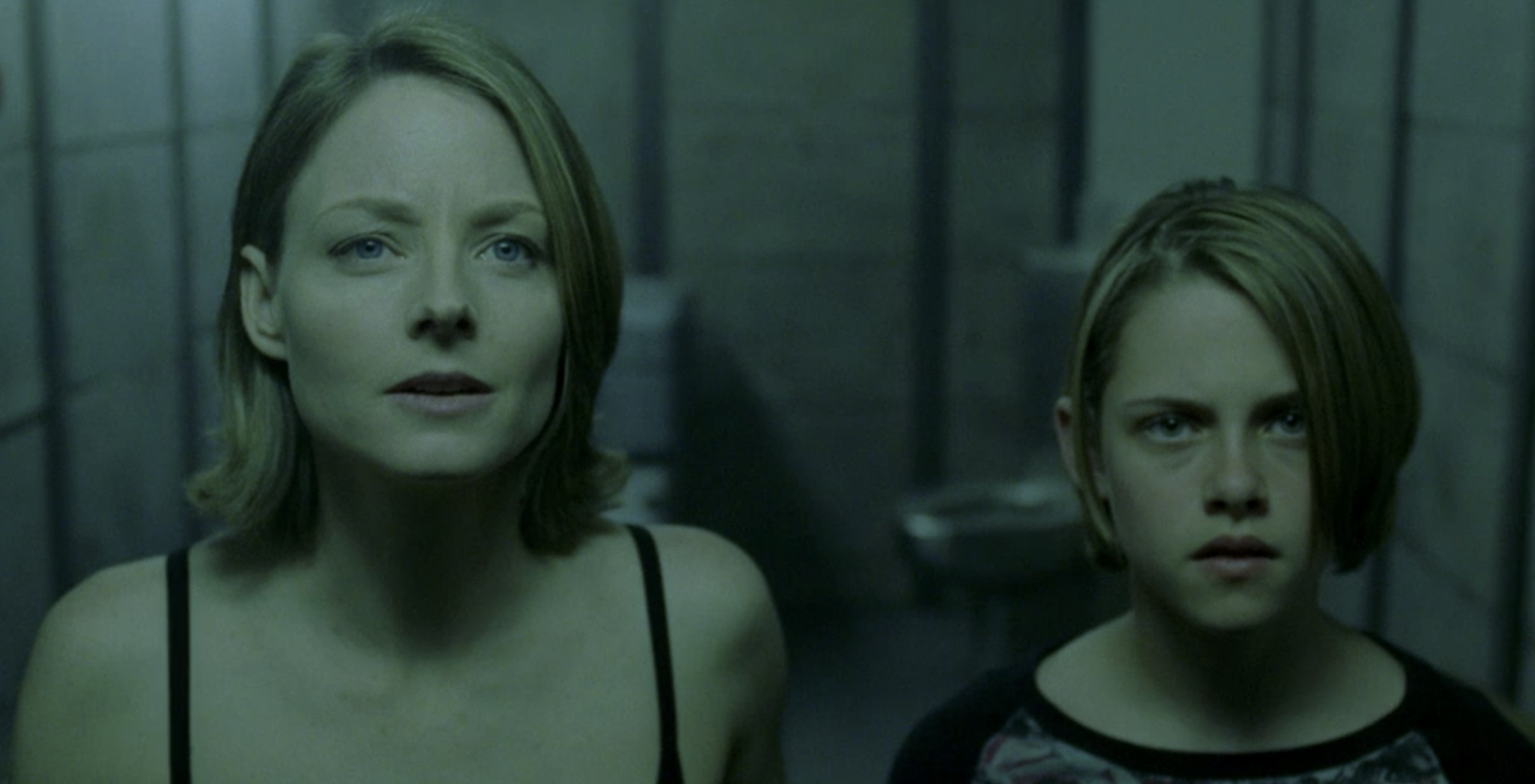
A recently divorced woman and her daughter move into a brownstone on the Upper West Side, which happens to be the target of a disgruntled heir looking to steal a set of bonds hidden underneath the floorboards. Mother and daughter are able to take refuge in the home’s panic room. However, daughter Sarah has diabetes and cannot safely wait out the criminals.
Identity (2003)
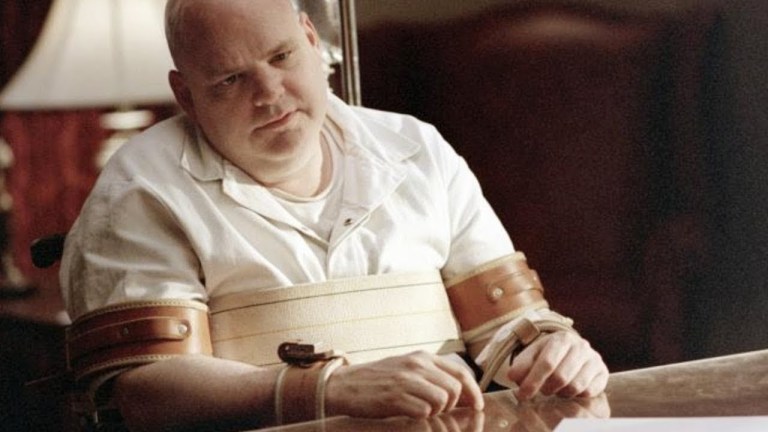
The frame story in Identity concerns mass murderer Malcolm Rivers whose defense attorney and psychiatrist wish to prove is not guilty by reason of insanity. Rivers suffers from dissociative identity disorder and has eleven “distinct personalities”. When his team misidentifies the “killer” personality, Rivers is overcome with a murderous urge.
Saw (2004)
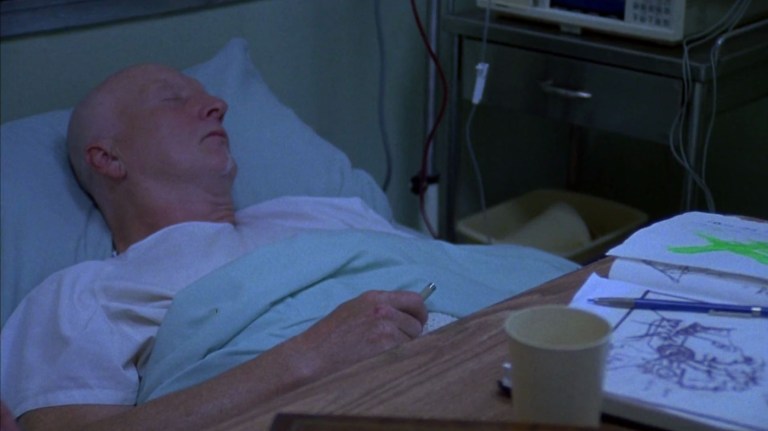
Spoiler warning: the Saw franchise is about a disabled man, terminal brain cancer patient John Kramer (Tobin Bell), who sets up murderous traps for people he deems in need of testing their will to live. After learning of his diagnosis, John attempted death by suicide and survived with a new appreciation for life. He hopes to give others the same appreciation by forcing them into life-or-death traps.
The Village (2004)

Ivy Walker (Bryce Dallas Howard) is the blind daughter of the village’s patriarch and leader. She is sent on a mission through the woods where vicious monsters are believed to live. Ivy’s goal is to reach the nearest town and procure medicine for her friend Lucius Hunt (Joaquin Phoenix). Lucius had been stabbed by a village resident (Adrian Brody) with a developmental disability.
Curse of Chucky (2013)
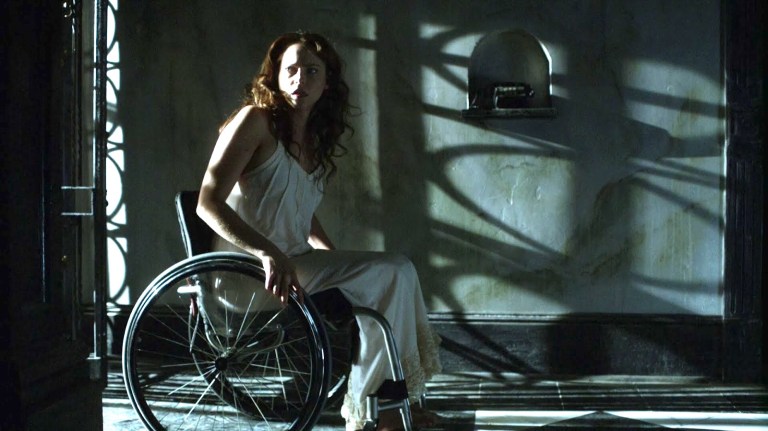
In Curse of Chucky, the lead character, Nica Pierce, is a paraplegic. Nica also suffers from a heart condition exacerbated by stress. Her condition is pivotal to the plot as Nina must battle the world’s most famous evil doll in a wheelchair. The heart condition makes the film all the more stressful. The actor playing Nica, Fiona Dourif, also played a role in a wheelchair in the another movie called After The Fall (2010).
American Horror Story: Freak Show (2014-2015)
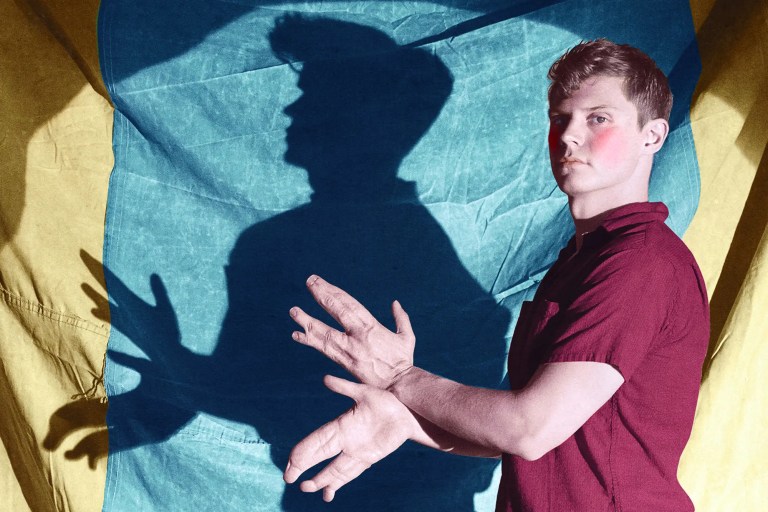
The fourth season of the American Horror Story anthology series centers on one of the last “freak shows” in existence in 1950s Florida. While creator Ryan Murphy says he was inspired by Tod Browning’s Freaks (1932), unlike that film most of the disabled characters are portrayed by able bodied actors in makeup (for instance, Evan Peters portrays a man with a hand deformity called Lobster Boy). A few actors with real disabilities, like Jyoti Amge (the world’s shortest woman) and Mat Fraser (an actor with thalidomide-induced phocomelia), were cast in small roles.
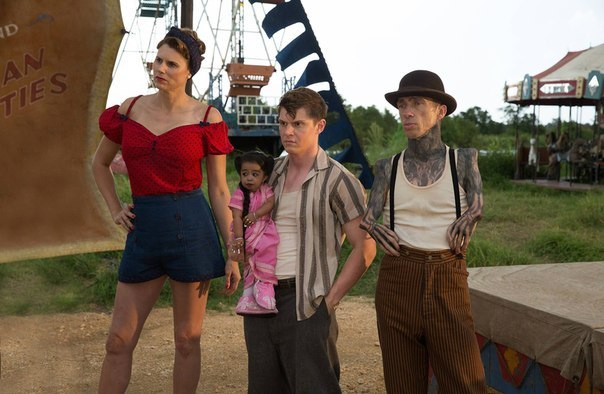
Disabled people are where black people were in the ’80s. They can’t be baddies. People [in the TV industry] are too politically correct. But they’re not ready to give us the hero role yet. So we get no role.
Mat Fraser, American Horror Story star says disabled casting on TV is “pathetic”
Don’t Breathe (2016)
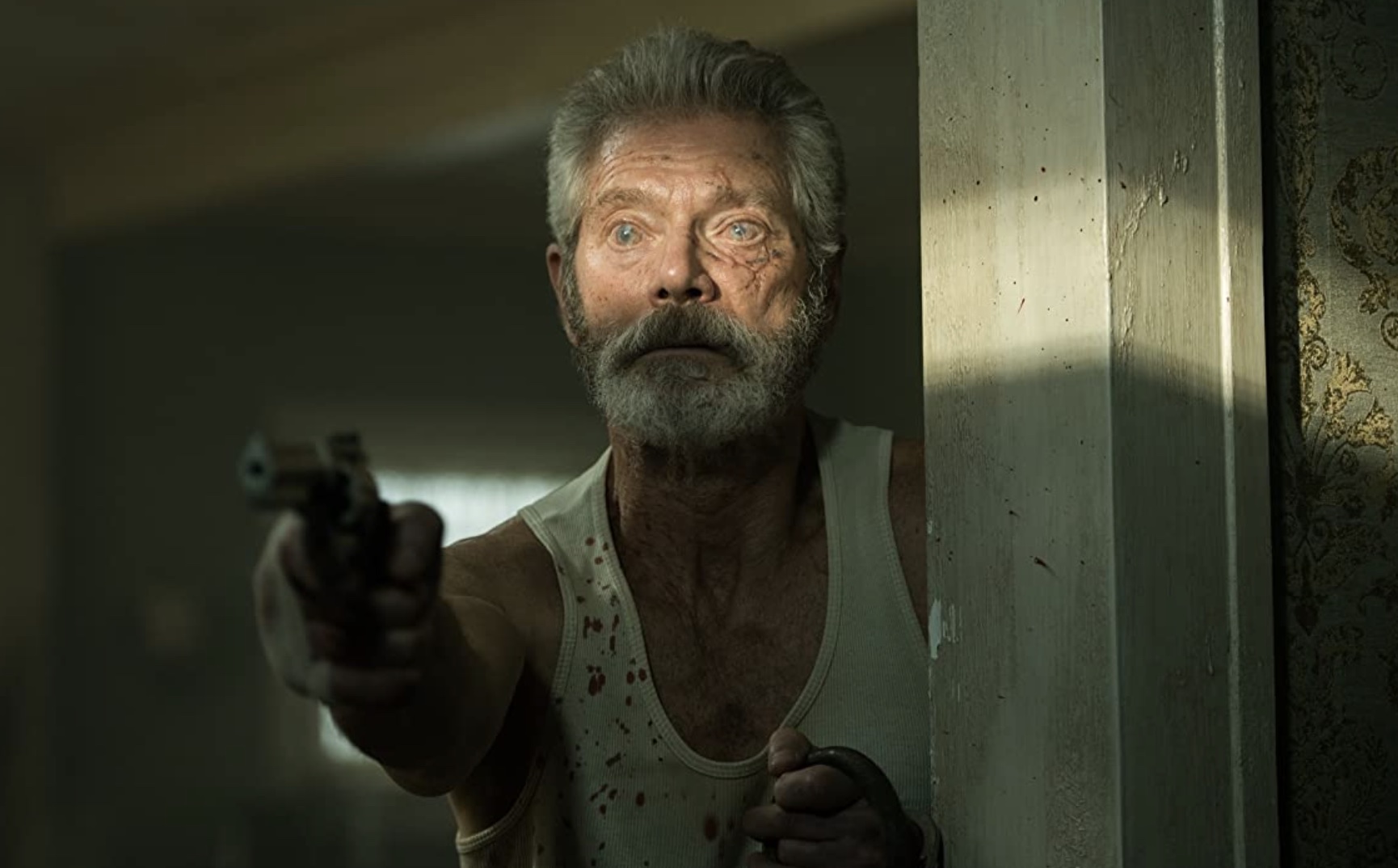
In this horror thriller Stephen Lang plays a blind Gulf War veteran who is rumored to keep $300,000 in cash in his Detroit home. Assuming the man to be an easy target, three home invaders, Rocky (Jane Levy), Alex (Dylan Minnette), and Money (Daniel Zovatto), target the blind man for robbery. While it seems like Don’t Breathe is a fresh twist on disability in cinema, it actually utilizes an age old trope called “Disability Superpower” where a disabled character is given superpowers in exchange for his or her disability.
Hush (2016)
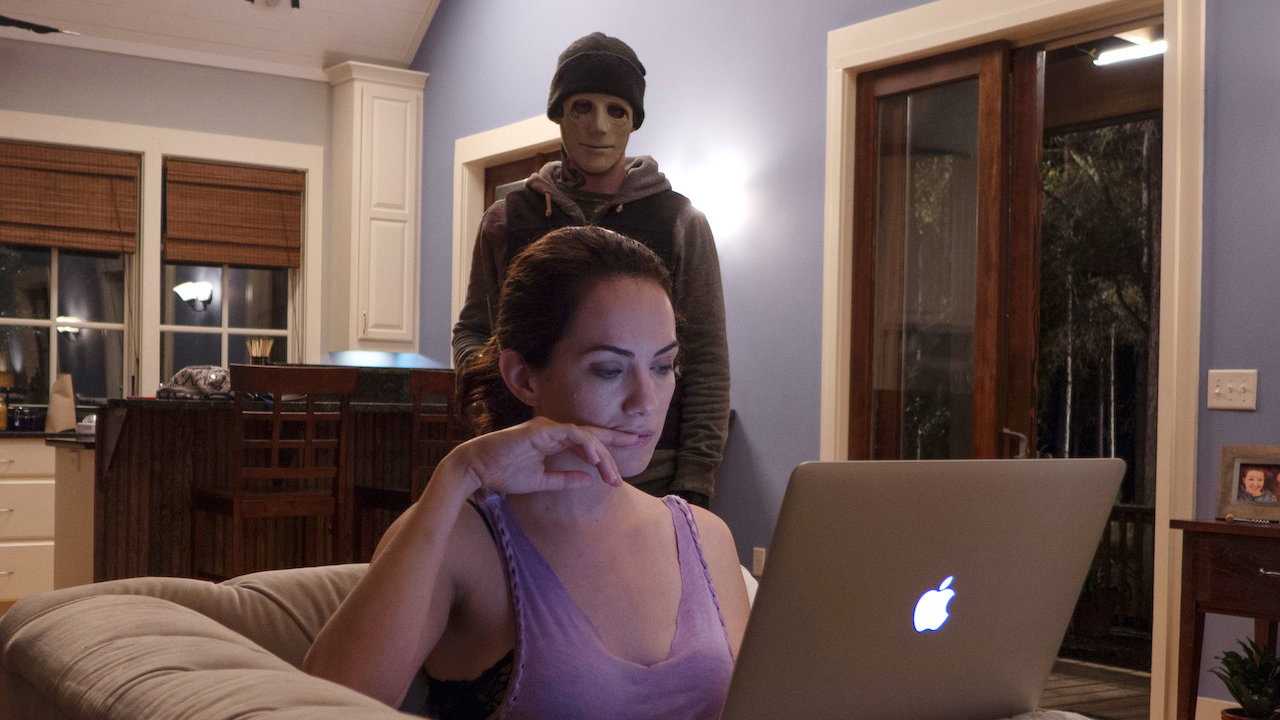
Mike Flanagan directed this slasher movie he wrote with his wife, Kate Siegel, who also stars. Siegel plays a deaf-mute horror author named Maddie who has just finished writing a book called Midnight Mass (in real life Mike Flanagan would go on to write and direct Midnight Mass for Netflix in 2021). Following her success, Maddie lives a quiet life alone in her cabin in the woods until a masked figure appears with a crossbow.
In horror movies like “Hush,” it’s not enough for a character to be only disabled: Characters must “overcome” their disability and use the special powers granted to them because of it.
Alison Stine, Some horror movies take a new approach to disability: Fetishizing deafness
Split (2016)
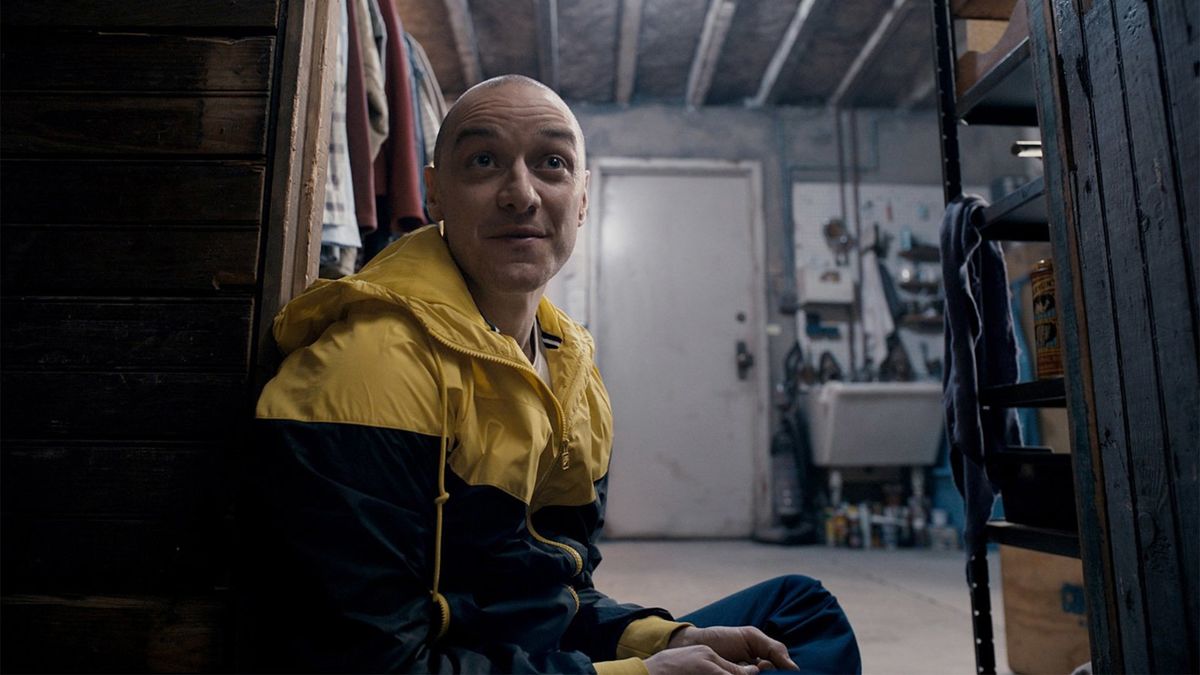
Kevin Wendell Crumb (James McAvoy) has dissociative identity disorder (DID) as a result of abuse he survived in childhood. He has 23 distinct personalities ranging from the kindly to the monstrous “Beast”. The film has been criticized for stigmatizing DID, a mental disorder whose sufferers are rarely violent.
The trailer for Split is causing outrage among trauma and general therapists… Do you plan to do anything to help the patients you are portraying as dangerous?
Bethany Brand, email to M. Night Shyamalan
The Shape of Water (2017)
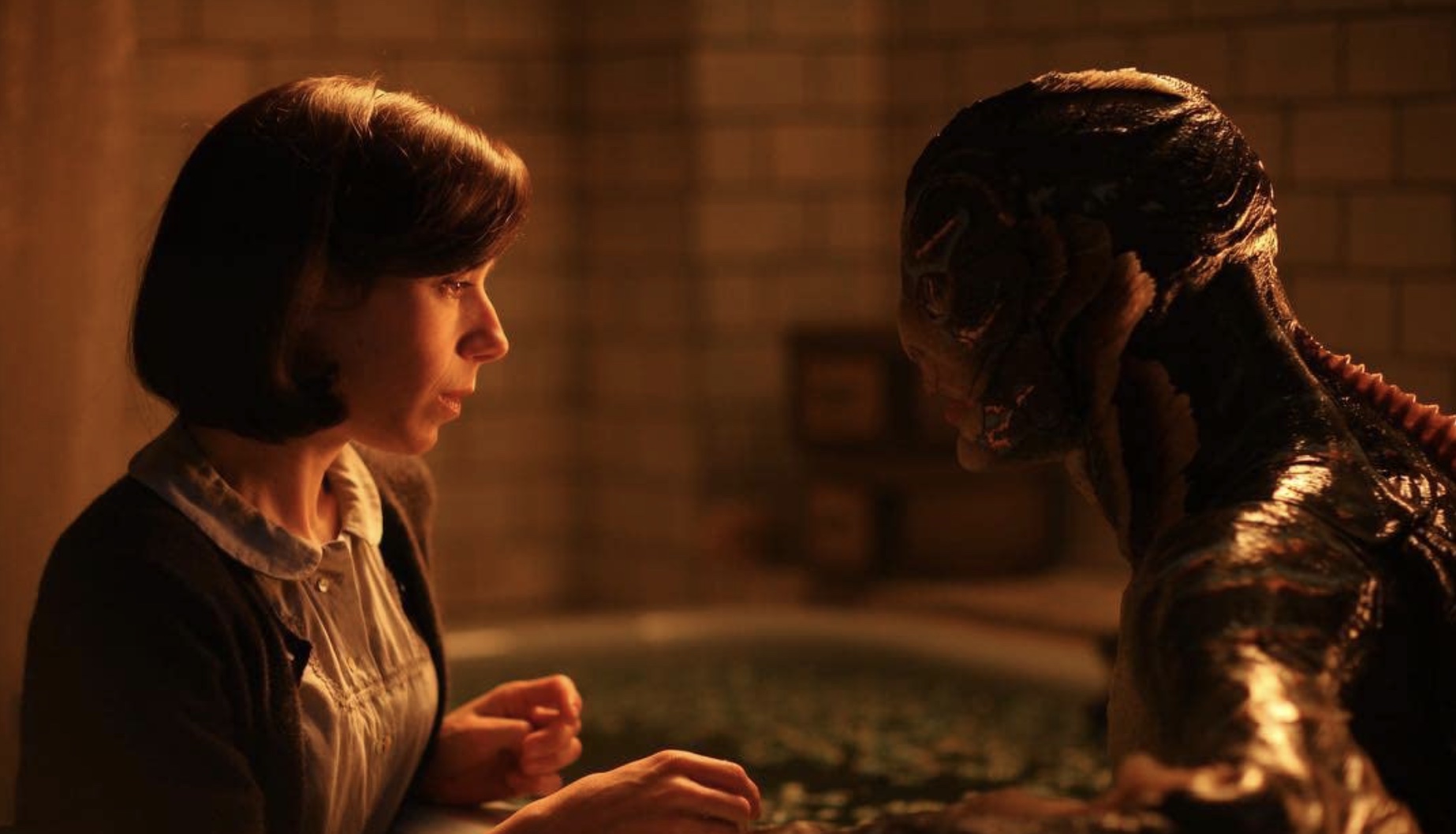
A romantic fantasy film by Guillermo del Toro, The Shape of Water follows a mute woman, Elisa Esposito (Sally Hawkins), who works as a cleaner and falls in love with a humanoid amphibian creature (Doug Jones) imprisoned in the government lab she works for. Elisa rescues the creature with help from her (few) friends and temporarily keeps him in her bathtub, where the intimacy between them progresses to sex.
On the one hand I have always known in my soul that [able-bodied] people see me as half of them, that they see me as less than whole. Which is why I hate that in media such as this, we can only be desired by those who don’t know any better.
Elsa Sjunneson-Henry, How ‘The Shape Of Water’ Makes People With Disabilities Feel Less Human
A Quiet Place (2018)

After an alien invasion, the Abbott family survives in total quiet to avoid being attacked by the alien creatures who have super-sensitive hearing. The family has a small advantage as daughter Regan (Millicent Simmonds) is deaf and the family knows ASL. While A Quiet Place was praised for showing audiences how simple and effective providing or utilizing captions can be, it has also been criticized by the Deaf community for portraying speaking as a “relief” to communicating in ASL.
First, I knew I needed a girl who was deaf for the role of the daughter, who is deaf in the movie. And for many reasons, I didn’t want a non-deaf actress pretending to be deaf. Most importunely though, because a deaf actress would help my knowledge and my understanding of the situations tenfold. I wanted someone who lives it and who could teach me about it on set. We found the most wonderful actress in Millicent. She is truly something special.
John Krasinski, A Quiet Place: John Krasinski Discusses Directing Silent Terror
Midsommar (2019)
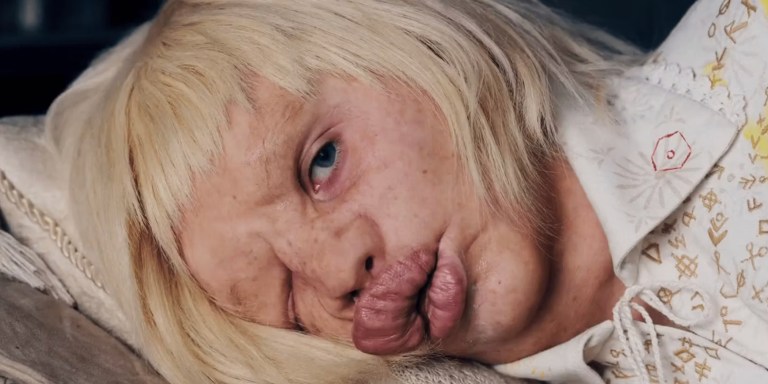
After being traumatized by the murder-suicide of her sister and parents, American student Dani (Florence Pugh) joins her boyfriend Christian (Jack Reynor) and his friends on a trip to visit a commune in Sweden belonging to the Hårga. It will take repeated viewings to understand the character of Ruben, a disabled prophet who is the product of the Harga’s belief that incest creates children with oracle gifts. The community believes Ruben is “unclouded by judgement” because he is a product of “pure blood” (incest).
In Aster’s words, Ruben embodies the political message of the film, which is perhaps partly critiquing the global rise of xenophobia and the return of the far right in Sweden. As Aster said in an interview, “If you consider Swedish history, it is a very closed society. And what does that really mean? There are things happening in Sweden right now that are echoes of things that happened in the Second World War.”
Chris Snyder and Meredith Geaghan-Breiner, All the hidden meanings you may have missed in the ‘Midsommar’ ending
The Silence (2019)
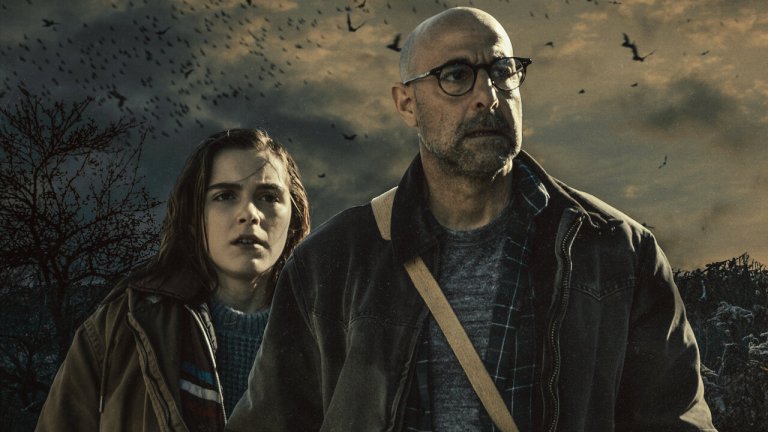
Like A Quiet Place, The Silence is about a near future in which Earth is under attack by creatures with super sensitive hearing. However, in The Silence the creatures emerge from a newly opened cave rather than from space. Ally (Kiernan Shipka), who was deafened by a car accident, escapes the city with her family in search of a place to survive.
Anyone who believes deaf characters would be especially quiet must not know many deaf people: We’re loud. My elementary school classmates laughed at me whenever I was picked to read aloud in class, unable to regulate the booming volume of my voice.
Alison Stine, Some horror movies take a new approach to disability: Fetishizing deafness
Run (2020)
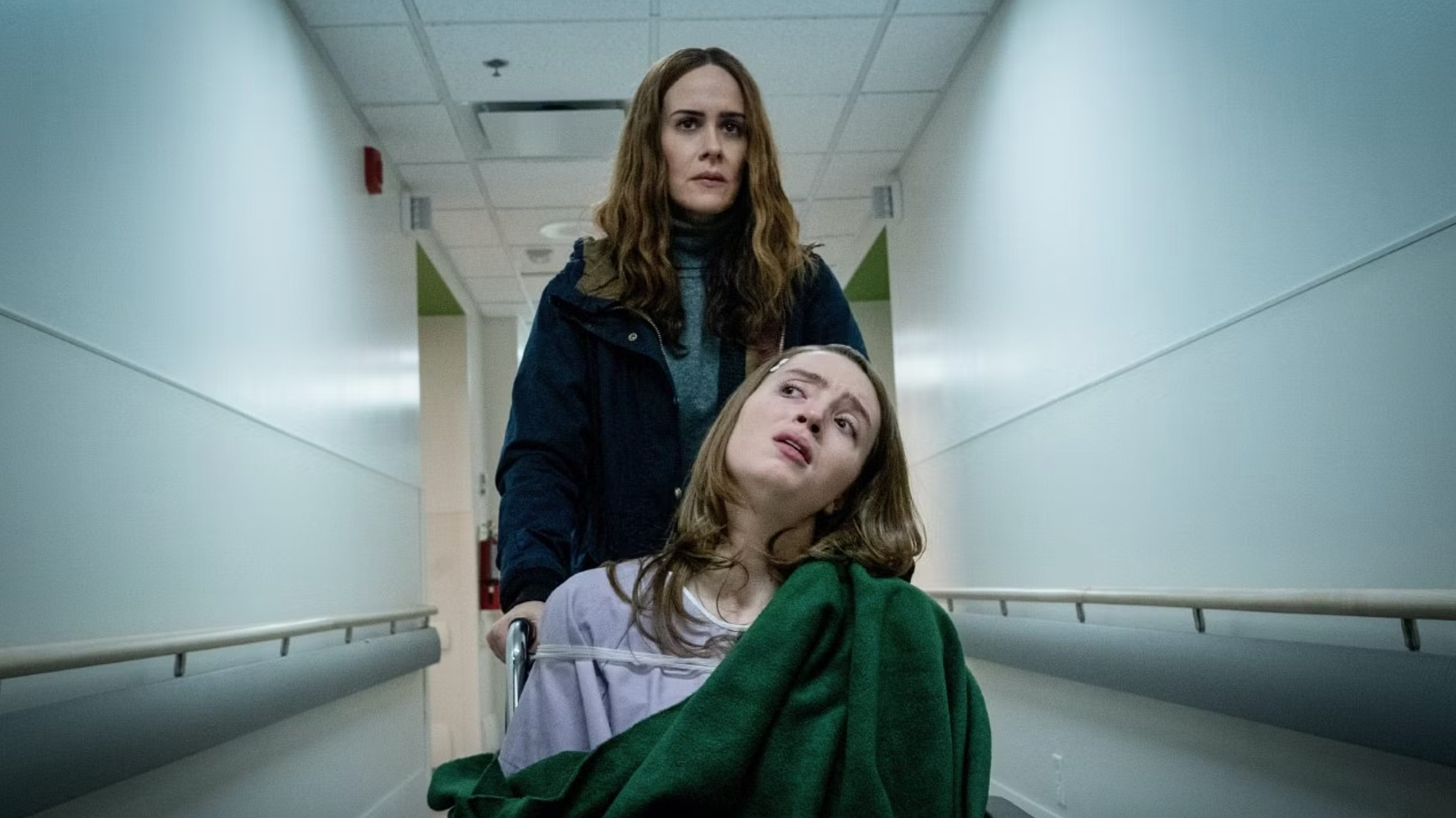
Like Misery, the scares in Run come from imagining the horrors that the wrong caregiver could impose upon a disabled victim, a reality disabled people live with every day. Mirroring the true crime the story of Gypsy Rose and her mother Dee Dee Blanchard, who is believed to have suffered from Munchausen syndrome by proxy, Run follows a mother (Sarah Paulson) who is obsessed with the health of her “disabled” daughter Chloe. Chloe begins to suspect that she is not as sick or disabled as her mother insists she is, but is unable to convince bystanders to help her.
See For Me (2021)
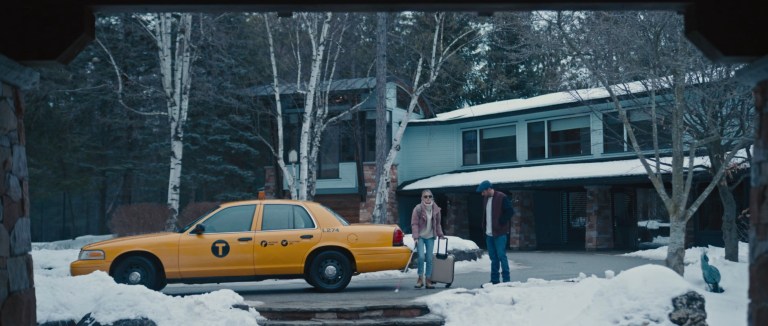
In a twist on a basic home invasion movie, Sophie (Skyler Davenport) is a house-sitter for a wealthy couple who is visually impaired. Throughout the movie she uses an app called “See For Me” to connect to a volunteer who guides her when she needs help. Playing against the “Disabled Saint” trope, Sophie is shown stealing expensive bottles of wine from her employers. When bigger, badder thieves enter the home, Sophie uses the See For Me app to outsmart them.
More Movies Featuring Characters With Disabilities
- Jennifer 8 (1992) disgruntled policeman John Berlin (Andy Garcia) is on the case of a serial killer he comes to realize is targeting blind women.
- The Bone Collector (1999) paralyzed from the neck down, forensics expert Lincoln Rhyme (Denzel Washington) works to uncover the identity of a serial killer, but becomes a target himself.
- Blindness (2008) a thriller about a community suffering from an epidemic of blindness written as an “allegory about the fragility of civilization“.
- The Taking of Deborah Logan (2014) a scary found footage horror movie about student documentary filmmakers who seek to document the progression of Deborah Logan’s (Jill Larsen) Alzheimer’s disease.
- Hereditary (2018) Charlie’s anaphylactic emergency is actually one of the most accurate portrayals of disability in horror cinema.
- Midnight Mass (2021) in this Netflix miniseries a teen girl who uses a wheelchair is “miraculously healed” by drinking vampire blood disguised as communion wine.
